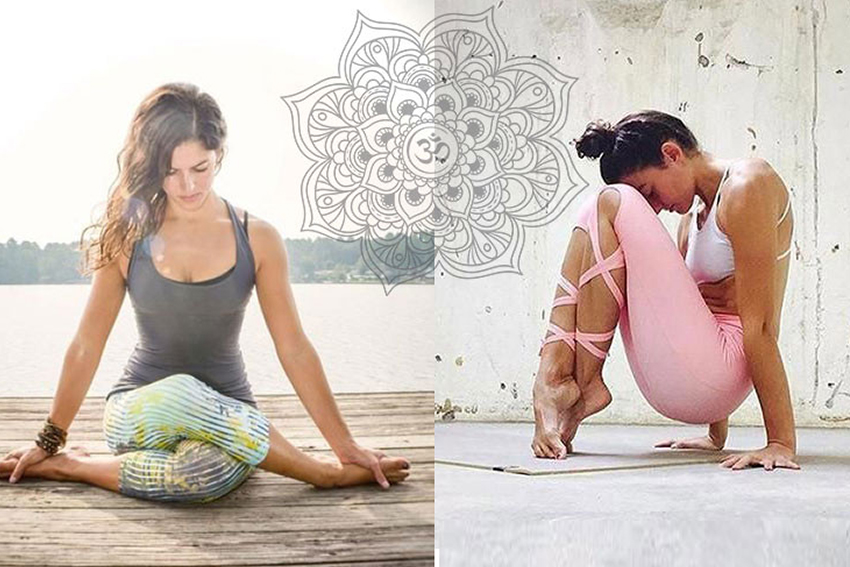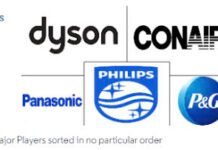44% of people surveyed indicate healthcare as their primary concern, above their employment need (Nielsen, 2018). What do you think about these numbers?
When beauty services, personal care (Beauty and personal care: hair care, skin, nails or even cosmetic surgery) has become too familiar concept to consumers. The competition for this service industry is getting fiercer.
Understanding and understanding the needs and market trends are essential jobs for businesses and potential service providers.
Market potential
Global growth rate
The healthcare and beauty care market is growing rapidly worldwide. This market can be divided into 4 large segments, including: Cosmetics, Skin Care, Personal Care and Fragrances. In particular, the largest segment of the market is the personal care segment with a market size of 1,024 million US dollars by 2020 (According to statista).
The global cosmetic packaging industry market is expected to reach 31.4 billion USD by 2020, with an annual growth rate of 4.3%. As the industry grows, salon, spa and wellness operators of all sizes will require supportive digital platforms to manage their businesses and fulfill their needs. customers’ increasing demand.
As of 2018, the Beauty & Personal Care market had sales of $ 489 billion worldwide, with Personal Care being the largest segment. This segment accounted for 45% of sales, followed by Skin Care segment with 27%. Sales are growing at a CAGR of 3% between 2012 and 2023. However, the cosmetics market shows higher growth and is expected to grow 5% per year, followed closely by the Skincare segment. with an expected growth rate of 4% per year.
Vietnam market overview
The Vietnamese market is an emerging opportunity for the beauty industry, driven by several key trends (Nielsen). In particular, modern trade is growing rapidly in Vietnam and is more likely to welcome regional and international brands in its network. Major chain stores selling beauty products, such as Medicare, Guardian and Pharmacity, have been expanding rapidly in 2017.
The global cosmetic packaging industry market is expected to reach 31.4 billion USD by 2020, with an annual growth rate of 4.3%. As the industry grows, salon, spa and wellness operators of all sizes will require supportive digital platforms to manage their businesses and fulfill their needs. customers’ increasing demand.
As of 2018, the Beauty & Personal Care market had sales of $ 489 billion worldwide, with Personal Care being the largest segment. This segment accounted for 45% of sales, followed by Skin Care segment with 27%. Sales are growing at a CAGR of 3% between 2012 and 2023. However, the cosmetics market shows higher growth and is expected to grow 5% per year, followed closely by the Skincare segment. with an expected growth rate of 4% per year.
Vietnam market overview
The Vietnamese market is an emerging opportunity for the beauty industry, driven by several key trends (Nielsen). In particular, modern trade is growing rapidly in Vietnam and is more likely to welcome regional and international brands in its network. Major chain stores selling beauty products, such as Medicare, Guardian and Pharmacity, have been expanding rapidly in 2017.

In addition, Vietnam’s middle-class population will reach 33,000,000 by 2020. Currently, 30% of the population who are generally better are educated about beauty regimes and are more likely to search for businesses. healthier and higher quality performance. Willingness to try new products in Vietnam is much higher than in Thailand, Indonesia, the Philippines, and other countries in Southeast Asia. Accordingly, the potential to develop a market for health care and beauty in Vietnam is extremely large, especially for brands that ensure quality, use healthy and friendly ingredients. and environment
Market trends in beauty and health care services
High technology priority
Like all industries, the on-demand economy has had a strong impact on the beauty industry. A system of beauty services taken advantage of at home, at work or wherever you choose has simplified the industry with the help of modern technology.
Technology now plays an important role in consumers’ decision on choosing beauty products and services. According to Deloitte Insights, consumers today give great priority to technology innovation. They are now more open, ready to welcome the new, believing that the new will bring better results.
Be proactive with information sources
Before deciding to experience a product or beauty service, consumers can also access and actively seek information through many different sources.
Friends and facebook are the most popular sources of information. According to a report from Q & Me, 66% search for information on Facebook, 63% ask friends, 51% search on websites and 50% search in newspapers and magazines for popular beauty services such as care, facial massage, acne treatment, hair and nail care … Particularly in the spa field, when surveying high-income women, up to 83.1% said their main source of information was introduced. from friends, relatives or colleagues.
Payments for beauty services are on the rise
Women will still apply beauty treatments even if they do not have enough money. Those with more income spend more on beauty (53% of women surveyed in Vietnam shared that way).
In addition, according to a survey on the Vietnamese cosmetics market in 2020, expenses for going to spas and salons from 100,000 to 2 million and 3-5 million are common payment rates. And the monthly payment for skincare at home is under 300K.
If comparing these numbers with the current per capita income in our country, beauty services are really a potential market.
Gen Z will train to rejuvenate
Dr. Kluk feels that Gen Z will also become increasingly savvy in skin care, adopting serious earlier habits. They care about their skin, it is never too early to actively care about the health of their skin.

She predicts that skincare delivery geared towards avid, digital savvy, this eco-conscious population will explode by 2020 and beyond its original range.
Male beauty explosion
The view that only women have beauty needs is changing.
A visit to Indie Beauty Expo London 2019 in October demonstrated that men’s-specific (not ‘gender-neutral’) beauty brands are on the rise.
Many brands are expanding to cater to the development of masculinity concepts and to capitalize on the personal care business of men.
Allied’s recent report predicts the global men’s personal care market will grow at a compound annual growth rate of 5.5% to reach $ 166 billion by 2022.
Source: synthetic




